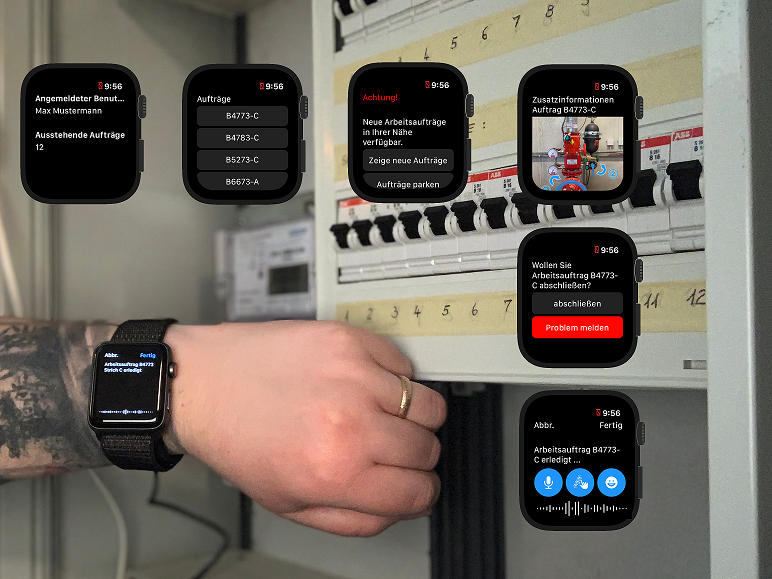Just have a quick look on your wrist…and are you wearing a smart watch? In case you do, then you belong to the fast-growing group of people trying to ease already their every-day lives by smart wearables.
Whereas fitness tracking, reading e-mails or contactless paying can be considered the more private use cases, wearables are only scarcely used in professional environment yet—in our case Facilities Management, it goes without saying.
Particularly when it comes to processing tickets or malfunction reports, smart watches can provide a substantial added value, indeed. To be able to offer this added value to our customers, we have given great care to the respective integration of smart watches into speedikon® C.
In a first use case, the malfunction reports captured in speedikon® C will be transferred directly on the smart watches of the service technicians involved. Depending on the type of ticket, further information such as descriptions or detailed operational steps to perform can be transferred along the actual order.

The respective service technician will then carry out the order or the respective operational steps and report back to the wearable “mission completed” or “problem still existing”. Since the smart watch is constantly communicating with speedikon® C, customers can easily transmit new orders that exist around the operational spot even on short term, or they carry out changes and transfer them to colleagues.
The great benefit in using wearables, as the name suggests, is their permanent physical presence at the user’s body, as you just carry them along. Thus, necessary information can be repeatedly verified during normal operational activities just by a glimpse on your wrist.
As the majority of smart watches available on the market do support voice assists such as Siri or Alexa, voice support is only a click away. Consequentially, service technicians can listen to the orders or report back the completion of operational steps as well as problems occurred via voice command.
Thus, employees always have both hands free to complete their actual tasks, by simultaneously calling up or reporting back information on demand.